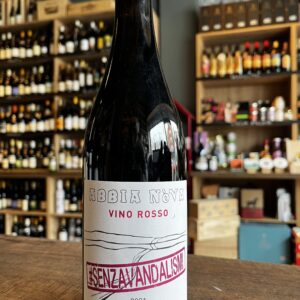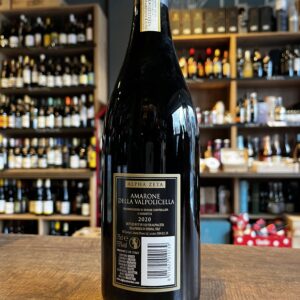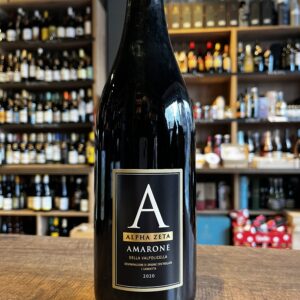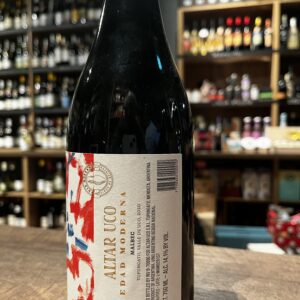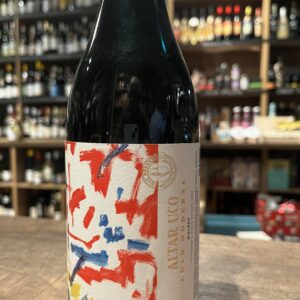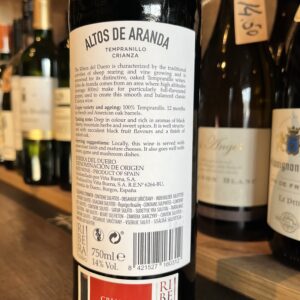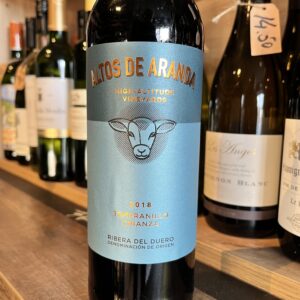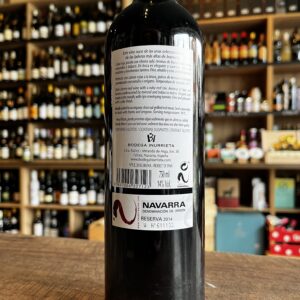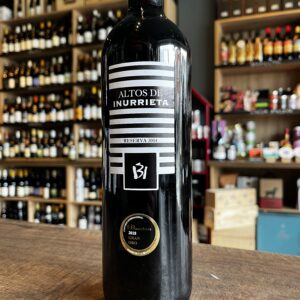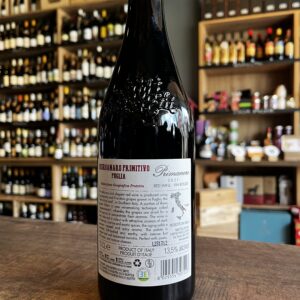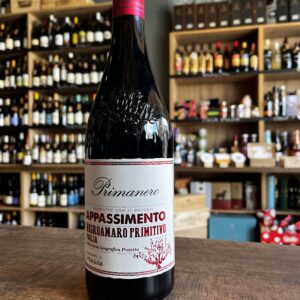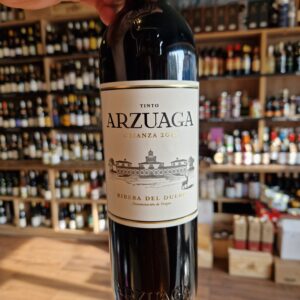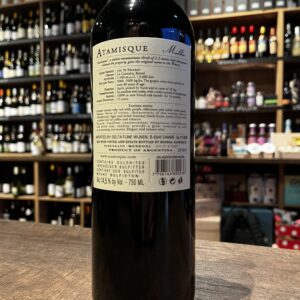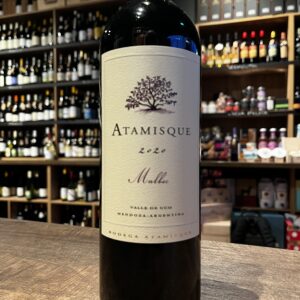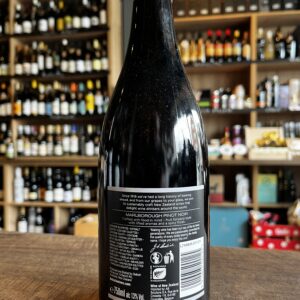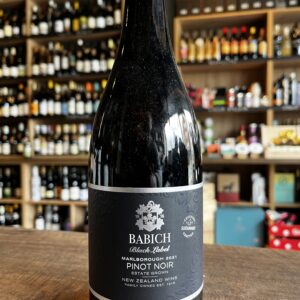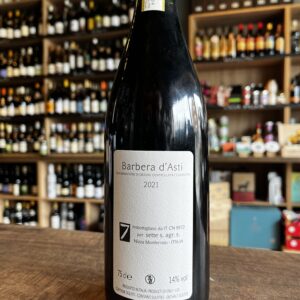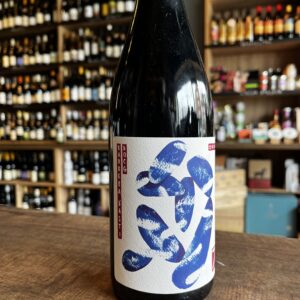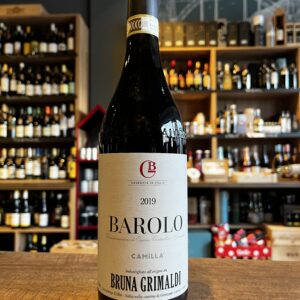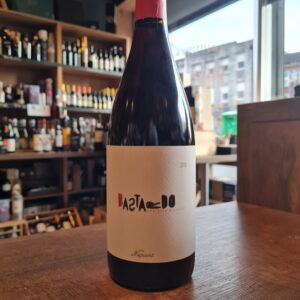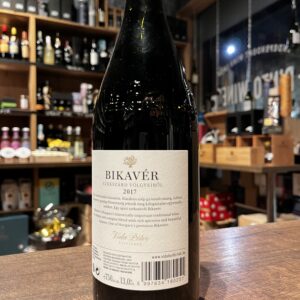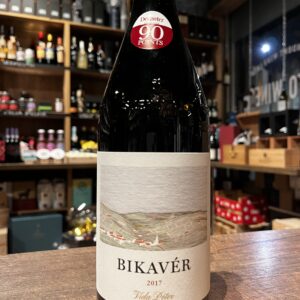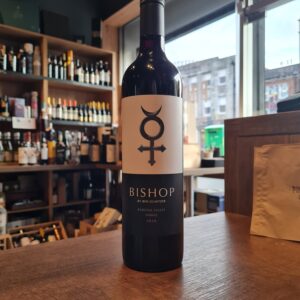-
 We felt this was the most appropriate name for this case as you will be the juror of these 12 bottles of wine. With that in mind we made a 'case' on this one that we think you will enjoy and scrutinize each every single one of them with a delightful outcome. In this case you will find 5 whites, 1 bubbly rosé and 6 delish reds. We rest our case! Whites Convés Branco Alentejo - The Serra do Mendro, located to the north of Vidigueira, creates a natural barrier that favors the retention of fresh winds from the Atlantic Ocean, causing greater rainfall and large thermal amplitudes. Cold mornings and nights and hot days promote a balanced maturation of the grapes, preserving their freshness and natural acidity. The gentle slopes and elevations of the landscape, as well as the clay-schist soils bring minerality, freshness and diversity to the wines of Herdade da Lisboa. It goes very well with fish and seafood dishes, salads or Asian dishes. Merinas Verdejo Organic - Lovely Organic from Castilla de La Mancha is an easy going, fruit forward wine. Generous flavours of citrus, peach, pear, lychee with a hint of jasmine, orange blossom and fennel. Fruity, bright and lively. Goes down very well on its own and pairs nicely with fish, chicken, vegetarian dishes and curry. Willowglen Gewürztraminer Riesling - Two of our favourite white grapes Gewürztraminer (80%) and Riesling (20%) make a delightful pairing in this Australian wine. As a result, you get an off dry floral wine with aromas of Turkish delight and rose petals with a zesty acidity. A popular style offering delicious aromatics making it the perfect choice for Thai or Indian food. Las Sastreria Garnacha Blanca - This delicious wine, belonging to the Haute Couture Print Collection, has been made with white Grenache grapes. It combines modernity and fruit character with the elegance of the Mediterranean style of this variety. Ideal with appetizers, seafood entrees, fish, white meat and pasta. Les Anges Sauvignon Blanc - Another one that won’t disappoint. This is a Val de Loire dry white. In Sancerre Kingdom this is an entry level Sauvignon Blanc that doesn't over promised but over delivers. Elegant and refreshing with a good burst of fruit and a touch of minerality. Bright, fresh yellow color. Flowery on the palate, fresh and delicate, fruity with a smooth finish. Produced thinking on sustainability it's a local wine for local people that got it's foot out of the region due to it's simplicity and quality La Jara Frizzante Rosé - A totally irresistible semi-sparkling Italian rosé from one of our favourite Prosecco producers, La Jara, but in this case they use a little bit of the red grape, Raboso, to give the wine its lovely pale coral colour. Dry on the palate and bursting with fresh strawberry notes reined in by the pithy bite of pink grapefruit. At 10.5% this is the wine to drink in the park with socially distanced friends, or with lunch in the garden before you’re really meant to be getting stuck into the vino! Bodegas Matsu El Picaro - The name El Picaro translates to The Rogue, and Matsu is the Japanese word meaning to wait, referencing the balance of attitude and patience that goes into making this wine. Fruit is hand harvested from a selection of 90-year-old vineyards in Toro (Spain) that are cultivated using biodynamic techniques. It has an intense aroma in which one can find blackberry, blueberry compote, cocoa and toasted almond characters. It is succulent and supple, and displays excellent fruit intensity, wonderfully supported by silky texture and fine tannins. The wine is fleshy and generous and will be a crowd pleaser. Colossal reserva tinto - "Colossal" is defined by something gigantic in place and time. This red from Lisbon has an intense ruby color and presents itself with a great concentration in the nose. Extremely rich aroma with predominance of red ripe fruits and some floral notes, well integrated with notes of spices coming from the ageing in French and American oak barrels. In the mouth it shows great complexity with notes of plums and blackberries. The finish is rich and elegant. Herdade Da Pimenta Colheita 2019 - The Portuguese rising region Alentejo is just made for such quality wines. The strong temperature differences between day and night temperatures have a beneficial effect on the nutrient absorption, acidity and sugar content of the grapes. This Pimenta Colheita Alentejo from Herdade da Pimenta shows deep ruby red with violet nuances. A complex scent of blueberries, white flowers and fine vanilla/wood aromas accompany the elegant fruit of the Pimenta Colheita. Chocolate and coconut notes are perceived on the palate, accompanied by delicate herbal and spicy notes, complex and balanced. The oak shows up in the Pimenta Colheita in a discreet caramel note with pleasant, fine-grained and soft tannins. The finish is concentrated, spicy and long-lasting. Château Haut Gravelier - Château Gravelier is located on superb hillsides on the edge of Entre Deux Mers, Bordeaux. Classic French blend of 70% Merlot 30% Cabernet Sauvignon. With deep colour, classic structure and unusually ripe flavours, this is classic claret to serve with roast beef, duck or T-bone steak. Heartland Stickleback 2016 Shiraz - This intense Shiraz swims against the current and harnesses the best that Australia has to offer. It is a wine of style and substance, offering dark fruits and hints of herbs. Col Di Sasso Castello Banfi - One of the best known and appreciated Banfi labels in the world, Col di Sasso, which translates to "Stony Hill", is a blend of Cabernet Sauvignon and Sangiovese cultivated on the most rocky and impervious slopes of the Banfi estate in Montalcino. The perfect marriage between these two grapes gives birth to a youthful yet concentrated and extremely fruity red wine. Great place to stay in Tuscany if you get a chance.
We felt this was the most appropriate name for this case as you will be the juror of these 12 bottles of wine. With that in mind we made a 'case' on this one that we think you will enjoy and scrutinize each every single one of them with a delightful outcome. In this case you will find 5 whites, 1 bubbly rosé and 6 delish reds. We rest our case! Whites Convés Branco Alentejo - The Serra do Mendro, located to the north of Vidigueira, creates a natural barrier that favors the retention of fresh winds from the Atlantic Ocean, causing greater rainfall and large thermal amplitudes. Cold mornings and nights and hot days promote a balanced maturation of the grapes, preserving their freshness and natural acidity. The gentle slopes and elevations of the landscape, as well as the clay-schist soils bring minerality, freshness and diversity to the wines of Herdade da Lisboa. It goes very well with fish and seafood dishes, salads or Asian dishes. Merinas Verdejo Organic - Lovely Organic from Castilla de La Mancha is an easy going, fruit forward wine. Generous flavours of citrus, peach, pear, lychee with a hint of jasmine, orange blossom and fennel. Fruity, bright and lively. Goes down very well on its own and pairs nicely with fish, chicken, vegetarian dishes and curry. Willowglen Gewürztraminer Riesling - Two of our favourite white grapes Gewürztraminer (80%) and Riesling (20%) make a delightful pairing in this Australian wine. As a result, you get an off dry floral wine with aromas of Turkish delight and rose petals with a zesty acidity. A popular style offering delicious aromatics making it the perfect choice for Thai or Indian food. Las Sastreria Garnacha Blanca - This delicious wine, belonging to the Haute Couture Print Collection, has been made with white Grenache grapes. It combines modernity and fruit character with the elegance of the Mediterranean style of this variety. Ideal with appetizers, seafood entrees, fish, white meat and pasta. Les Anges Sauvignon Blanc - Another one that won’t disappoint. This is a Val de Loire dry white. In Sancerre Kingdom this is an entry level Sauvignon Blanc that doesn't over promised but over delivers. Elegant and refreshing with a good burst of fruit and a touch of minerality. Bright, fresh yellow color. Flowery on the palate, fresh and delicate, fruity with a smooth finish. Produced thinking on sustainability it's a local wine for local people that got it's foot out of the region due to it's simplicity and quality La Jara Frizzante Rosé - A totally irresistible semi-sparkling Italian rosé from one of our favourite Prosecco producers, La Jara, but in this case they use a little bit of the red grape, Raboso, to give the wine its lovely pale coral colour. Dry on the palate and bursting with fresh strawberry notes reined in by the pithy bite of pink grapefruit. At 10.5% this is the wine to drink in the park with socially distanced friends, or with lunch in the garden before you’re really meant to be getting stuck into the vino! Bodegas Matsu El Picaro - The name El Picaro translates to The Rogue, and Matsu is the Japanese word meaning to wait, referencing the balance of attitude and patience that goes into making this wine. Fruit is hand harvested from a selection of 90-year-old vineyards in Toro (Spain) that are cultivated using biodynamic techniques. It has an intense aroma in which one can find blackberry, blueberry compote, cocoa and toasted almond characters. It is succulent and supple, and displays excellent fruit intensity, wonderfully supported by silky texture and fine tannins. The wine is fleshy and generous and will be a crowd pleaser. Colossal reserva tinto - "Colossal" is defined by something gigantic in place and time. This red from Lisbon has an intense ruby color and presents itself with a great concentration in the nose. Extremely rich aroma with predominance of red ripe fruits and some floral notes, well integrated with notes of spices coming from the ageing in French and American oak barrels. In the mouth it shows great complexity with notes of plums and blackberries. The finish is rich and elegant. Herdade Da Pimenta Colheita 2019 - The Portuguese rising region Alentejo is just made for such quality wines. The strong temperature differences between day and night temperatures have a beneficial effect on the nutrient absorption, acidity and sugar content of the grapes. This Pimenta Colheita Alentejo from Herdade da Pimenta shows deep ruby red with violet nuances. A complex scent of blueberries, white flowers and fine vanilla/wood aromas accompany the elegant fruit of the Pimenta Colheita. Chocolate and coconut notes are perceived on the palate, accompanied by delicate herbal and spicy notes, complex and balanced. The oak shows up in the Pimenta Colheita in a discreet caramel note with pleasant, fine-grained and soft tannins. The finish is concentrated, spicy and long-lasting. Château Haut Gravelier - Château Gravelier is located on superb hillsides on the edge of Entre Deux Mers, Bordeaux. Classic French blend of 70% Merlot 30% Cabernet Sauvignon. With deep colour, classic structure and unusually ripe flavours, this is classic claret to serve with roast beef, duck or T-bone steak. Heartland Stickleback 2016 Shiraz - This intense Shiraz swims against the current and harnesses the best that Australia has to offer. It is a wine of style and substance, offering dark fruits and hints of herbs. Col Di Sasso Castello Banfi - One of the best known and appreciated Banfi labels in the world, Col di Sasso, which translates to "Stony Hill", is a blend of Cabernet Sauvignon and Sangiovese cultivated on the most rocky and impervious slopes of the Banfi estate in Montalcino. The perfect marriage between these two grapes gives birth to a youthful yet concentrated and extremely fruity red wine. Great place to stay in Tuscany if you get a chance. -
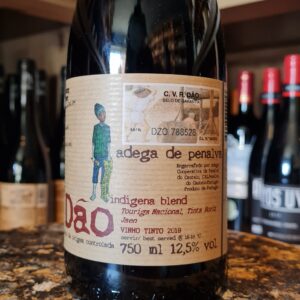 Adega de Penalva wines are delicious everyday examples of one of Portugal’s most intriguing appellations — the Dão. Perched above the Dão river itself as it snakes through its granite valleys, the Adega de Penalva is one of the leading cooperatives in the area, boasting around a thousand member growers. It’s important to note, though, that the average holding per member amounts to barely over a hectare—a figure that reminds us how tenaciously much of rural Portugal clings to its old ways. (On that note, all fruit destined for the ‘Indigena’ bottlings is hand-harvested.) Since its founding in the 1960s, the Adega has been collecting its members’ grapes and producing clean, characterful wines with a minimum of fuss that showcase real regional typicity while remaining extremely attractively priced. Adega de Penalva Indigena Dao Tinto is made with 40% Touriga Nacional, 30% Tinta Roriz (Tempranillo), and 30% Jaen (Mencía). Hand-harvested, fully destemmed and aged in a combination of stainless steel and concrete tank. Aromas of leather and blueberries lead to a palate full of dark fruits with cherry and raspberry notes. Pairs well with beef and lamb.
Adega de Penalva wines are delicious everyday examples of one of Portugal’s most intriguing appellations — the Dão. Perched above the Dão river itself as it snakes through its granite valleys, the Adega de Penalva is one of the leading cooperatives in the area, boasting around a thousand member growers. It’s important to note, though, that the average holding per member amounts to barely over a hectare—a figure that reminds us how tenaciously much of rural Portugal clings to its old ways. (On that note, all fruit destined for the ‘Indigena’ bottlings is hand-harvested.) Since its founding in the 1960s, the Adega has been collecting its members’ grapes and producing clean, characterful wines with a minimum of fuss that showcase real regional typicity while remaining extremely attractively priced. Adega de Penalva Indigena Dao Tinto is made with 40% Touriga Nacional, 30% Tinta Roriz (Tempranillo), and 30% Jaen (Mencía). Hand-harvested, fully destemmed and aged in a combination of stainless steel and concrete tank. Aromas of leather and blueberries lead to a palate full of dark fruits with cherry and raspberry notes. Pairs well with beef and lamb. -
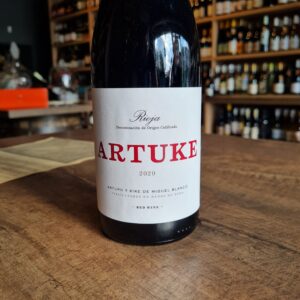 Made in a Beaujolais style, with the carbonic maceration method. This juicy ''Joven'' fresh fruited style of Rioja has zero oak influence as it ages in concrete tanks for 6 months. Farmed without any synthetic fertilizers or pesticides. Arturo Blanco was once asked what the philosophy at Bodegas Artuke was and he simply replied 'we are farmers'. The approach here is 100% focused on interpreting the family's 32 plots which are split between the villages of Baños de Ebro and Ábalos in Rioja Alavesa. Biodynamic techniques are employed in the vineyards and Arturo and Kike are also busy recovering old, ignored plots of ancient vines. Vinification is aimed at expressing the characteristics of the vineyard and quality of fruit above all else. The restrained use of oak and inclination towards different types/sizes of barrel, plus an unwillingness to adhere to the subscribed regimes for classification means that Artuke are precluded from using Crianza, Reserva and Gran Reserva designations on their wines. This mouth-watering red wine takes a relatively deep chill which makes it a versatile pairing with all types of food: tuna, pretty much anything made with zucchini, fried chicken, gooey cheese sandwiches, pizza, etc…
Made in a Beaujolais style, with the carbonic maceration method. This juicy ''Joven'' fresh fruited style of Rioja has zero oak influence as it ages in concrete tanks for 6 months. Farmed without any synthetic fertilizers or pesticides. Arturo Blanco was once asked what the philosophy at Bodegas Artuke was and he simply replied 'we are farmers'. The approach here is 100% focused on interpreting the family's 32 plots which are split between the villages of Baños de Ebro and Ábalos in Rioja Alavesa. Biodynamic techniques are employed in the vineyards and Arturo and Kike are also busy recovering old, ignored plots of ancient vines. Vinification is aimed at expressing the characteristics of the vineyard and quality of fruit above all else. The restrained use of oak and inclination towards different types/sizes of barrel, plus an unwillingness to adhere to the subscribed regimes for classification means that Artuke are precluded from using Crianza, Reserva and Gran Reserva designations on their wines. This mouth-watering red wine takes a relatively deep chill which makes it a versatile pairing with all types of food: tuna, pretty much anything made with zucchini, fried chicken, gooey cheese sandwiches, pizza, etc… -
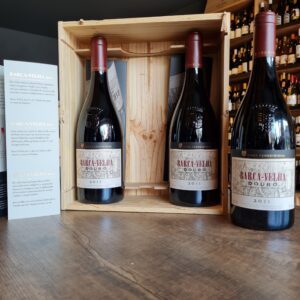 Casa Ferreirinha, was acquired by Sogrape Vinhos in 1987, its wines are synonymous with time and art. This has happened since its foundation, in the 18th century, by the hand of Bernardo Ferreira, who saw the formula refined by his descendants, especially by his granddaughter Dona Antónia Adelaide Ferreira, who affectionately became known as "Ferreirinha" or "Ferreirinha-da-Régua" for the people of that land. Through the hands of Dona Antónia, who twice widowed herself at the head of a large company, Ferreira consolidated itself admirably. Her entrepreneurial spirit taught her to foresee, decide, create, teach and love, making her a figure of great projection and charisma. Barca Velha is the result of the passion of Fernando Nicolau de Almeida (Casa Ferreirinha Head Winemaker in 1952), who envisioned a high quality Douro Red Wines made with the aging potential of Vintage Ports. The first harvest was 1952. Barca Velha is only released in exceptional years, current head winemaker Luis Sottomayor began his career at this house as an apprentice learning directly from Fernando Nicolau D'Almeida. ''2011 was an extraordinary year-one of the best ever in Douro-Intense and exceptional quality. When this wine was born, we soon realized that it would be destined for Barca-Velha”. But even so, it was necessary to pass the great test of time with distinction. In the barrels, first, and then in the bottle, it was followed and evaluated over nine years, until the final decision was made.
Casa Ferreirinha, was acquired by Sogrape Vinhos in 1987, its wines are synonymous with time and art. This has happened since its foundation, in the 18th century, by the hand of Bernardo Ferreira, who saw the formula refined by his descendants, especially by his granddaughter Dona Antónia Adelaide Ferreira, who affectionately became known as "Ferreirinha" or "Ferreirinha-da-Régua" for the people of that land. Through the hands of Dona Antónia, who twice widowed herself at the head of a large company, Ferreira consolidated itself admirably. Her entrepreneurial spirit taught her to foresee, decide, create, teach and love, making her a figure of great projection and charisma. Barca Velha is the result of the passion of Fernando Nicolau de Almeida (Casa Ferreirinha Head Winemaker in 1952), who envisioned a high quality Douro Red Wines made with the aging potential of Vintage Ports. The first harvest was 1952. Barca Velha is only released in exceptional years, current head winemaker Luis Sottomayor began his career at this house as an apprentice learning directly from Fernando Nicolau D'Almeida. ''2011 was an extraordinary year-one of the best ever in Douro-Intense and exceptional quality. When this wine was born, we soon realized that it would be destined for Barca-Velha”. But even so, it was necessary to pass the great test of time with distinction. In the barrels, first, and then in the bottle, it was followed and evaluated over nine years, until the final decision was made. -
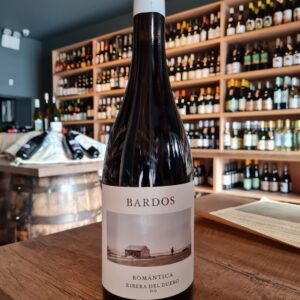 Bardos Romantica is a red wine from Ribera del Duero, produced by Bodegas Bardos, belonging to the Vintae Group, which are known to produce wines in twelve different Spanish regions, such as the Hacienda López from Haro. Made from 100% Tinta del País (Tempranillo). The grapes come from a rigorous selection of low yielding old vines located in the highlands of the central plateau in Onesimus Quintanilla (Valladolid). The grapes, once collected, are transported to the winery in boxes of 15 kilos and small trailers. Here a selection of bunches is made on tables. Subsequent fermentation and maceration is carried out in vats at a temperature of 28ªC for 3 or 4 weeks. Once fermented and macerated, Bardos Romantica undergoes a malolactic fermentation in French oak barrels, with a weekly beating and strict control of each barrel. Finally, Bardos Romantica is aged for 14 months in barrels of one and two years in French oak, located in underground cellars where the temperature is maintained throughout the year at around 14ºC. Bardos Romantica is a soft and original wine. After all the technicalities all I can say is a great wine, enjoy it, share it!
Bardos Romantica is a red wine from Ribera del Duero, produced by Bodegas Bardos, belonging to the Vintae Group, which are known to produce wines in twelve different Spanish regions, such as the Hacienda López from Haro. Made from 100% Tinta del País (Tempranillo). The grapes come from a rigorous selection of low yielding old vines located in the highlands of the central plateau in Onesimus Quintanilla (Valladolid). The grapes, once collected, are transported to the winery in boxes of 15 kilos and small trailers. Here a selection of bunches is made on tables. Subsequent fermentation and maceration is carried out in vats at a temperature of 28ªC for 3 or 4 weeks. Once fermented and macerated, Bardos Romantica undergoes a malolactic fermentation in French oak barrels, with a weekly beating and strict control of each barrel. Finally, Bardos Romantica is aged for 14 months in barrels of one and two years in French oak, located in underground cellars where the temperature is maintained throughout the year at around 14ºC. Bardos Romantica is a soft and original wine. After all the technicalities all I can say is a great wine, enjoy it, share it! -
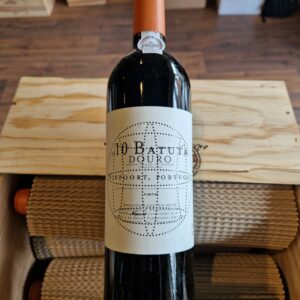 Niepoort is a family business dating back to 1842. Its winemaking tradition began in the Douro region, with the roduction of Port wine. Nowadays has a foothold in all the major Portuguese regions with still wines production outside the Douro Valley. Know-how, enthusiasm and an innovative mindset have passed down from generation to generation, making Niepoort one of the most authentic and notable Portuguese wine producers. The grapes to produce this wine come from Quinta do Carril, from a north-facing vineyard with more than 70 years, and also from old vineyards about 100 years old near Quinta de Nápoles. Niepoort sums up this elegant bottling well by saying “Batuta is a wine of extremes, having more of everything, is at the same time, the one with a more discrete behavior.” Quite so this year (and most), as the wine opens with subtlety and elegance, seeming rather mute. It is somewhat tinged by oak early in its life. That will be easily absorbed. It takes some air and patience to see what this sometimes too subtle wine has, but there is good structure underneath (and a little tannic pop that emerges with air) that should allow the wine to develop well and have the time to acquire some complexity, which is often its best feature. It has a very Burgundian feel, with a silky, graceful mid-palate. There is nothing obvious about this bottling in any year. This year, certainly, it is a Batuta that is perhaps subtle to a fault, but it will be a perfect food wine and when you are drinking it you will suddenly realize how much you like it.'' Time will tell, definitely one of the great current masters of winemaking. Not just in Portugal but in the world
Niepoort is a family business dating back to 1842. Its winemaking tradition began in the Douro region, with the roduction of Port wine. Nowadays has a foothold in all the major Portuguese regions with still wines production outside the Douro Valley. Know-how, enthusiasm and an innovative mindset have passed down from generation to generation, making Niepoort one of the most authentic and notable Portuguese wine producers. The grapes to produce this wine come from Quinta do Carril, from a north-facing vineyard with more than 70 years, and also from old vineyards about 100 years old near Quinta de Nápoles. Niepoort sums up this elegant bottling well by saying “Batuta is a wine of extremes, having more of everything, is at the same time, the one with a more discrete behavior.” Quite so this year (and most), as the wine opens with subtlety and elegance, seeming rather mute. It is somewhat tinged by oak early in its life. That will be easily absorbed. It takes some air and patience to see what this sometimes too subtle wine has, but there is good structure underneath (and a little tannic pop that emerges with air) that should allow the wine to develop well and have the time to acquire some complexity, which is often its best feature. It has a very Burgundian feel, with a silky, graceful mid-palate. There is nothing obvious about this bottling in any year. This year, certainly, it is a Batuta that is perhaps subtle to a fault, but it will be a perfect food wine and when you are drinking it you will suddenly realize how much you like it.'' Time will tell, definitely one of the great current masters of winemaking. Not just in Portugal but in the world -
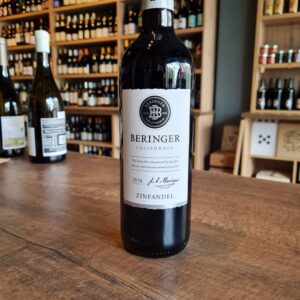 A quintessential California Zinfandel. Beringer has built a legacy crafting renowned wines from a prized collection of California vineyards, celebrating a remarkable winemaking tradition dating back to 1876 when the Napa winery was founded by Beringer brothers Frederick & Jacob. A Zin that definitely portrays some Classic California ripeness. Ripe blueberries, blackberries, plums, a hint of smoky and mineral characters and a touch perfumed (dried floral notes) on the nose. On the palate you’ll find that smoke and berry ripeness coming through, with a little tangy raspberry adding to a lengthy finish. Medium plus body with a silky mouthfeel, smooth light tannins and luscious acidity. I love Zins with a juicy bacon and smoked cheddar burger or with your favourite pizza. This one should not disappoint!
A quintessential California Zinfandel. Beringer has built a legacy crafting renowned wines from a prized collection of California vineyards, celebrating a remarkable winemaking tradition dating back to 1876 when the Napa winery was founded by Beringer brothers Frederick & Jacob. A Zin that definitely portrays some Classic California ripeness. Ripe blueberries, blackberries, plums, a hint of smoky and mineral characters and a touch perfumed (dried floral notes) on the nose. On the palate you’ll find that smoke and berry ripeness coming through, with a little tangy raspberry adding to a lengthy finish. Medium plus body with a silky mouthfeel, smooth light tannins and luscious acidity. I love Zins with a juicy bacon and smoked cheddar burger or with your favourite pizza. This one should not disappoint! -
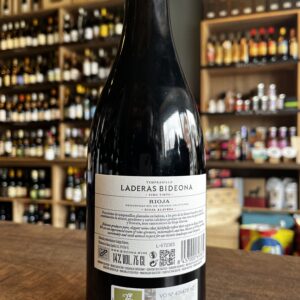
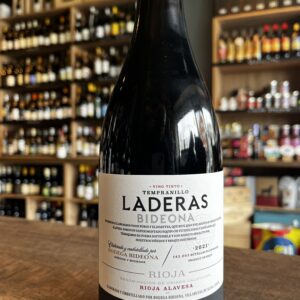 Badiola is a winery in the heart of Rioja Alavesa. Founded in 2018 by acquiring an existing winery, Badiola offers village and single vieyard wines that display the freshness, elegance and depth of flavours which distinguish the great wines from this part of Rioja. Badiola cultivates over 300 parcels of extraordinary vineyards on the slopes of the Sierra Cantabria, mainly in the villages of villabuena de Alava, Leza, Samaniego, Laguardia, Navaridas and Banos de Ebro. Averag age of the vines are 50 years old which means that fruit is of outstanding quality and well the vine is well inserted into the soil and not as prone to climatic issues that may arise. This wine is made from high quality, low yelding grapes from hillside(Laderas) vines on limestones soils, without the need for carbonic maceration to mask unripe or unhealthy fruit. About a quarter of the wine is aged from 4 to 6 months in new barriques of top quality French and American Oak, for added complexity and texture, but not overt oak character. A versatile and very satisfying drinking wine and a great example of cooler climate Tempranillo from Rioja Alavesa. A good match with both meat and fish-based tapas, mezze, rice dishes and pasta.
Badiola is a winery in the heart of Rioja Alavesa. Founded in 2018 by acquiring an existing winery, Badiola offers village and single vieyard wines that display the freshness, elegance and depth of flavours which distinguish the great wines from this part of Rioja. Badiola cultivates over 300 parcels of extraordinary vineyards on the slopes of the Sierra Cantabria, mainly in the villages of villabuena de Alava, Leza, Samaniego, Laguardia, Navaridas and Banos de Ebro. Averag age of the vines are 50 years old which means that fruit is of outstanding quality and well the vine is well inserted into the soil and not as prone to climatic issues that may arise. This wine is made from high quality, low yelding grapes from hillside(Laderas) vines on limestones soils, without the need for carbonic maceration to mask unripe or unhealthy fruit. About a quarter of the wine is aged from 4 to 6 months in new barriques of top quality French and American Oak, for added complexity and texture, but not overt oak character. A versatile and very satisfying drinking wine and a great example of cooler climate Tempranillo from Rioja Alavesa. A good match with both meat and fish-based tapas, mezze, rice dishes and pasta. -
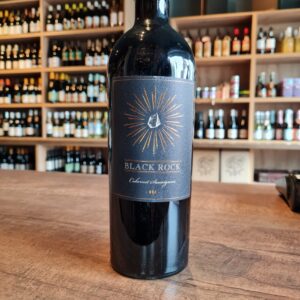 Black Rock is part of the Bronco Wine Company, which was formed in 1973 by Fred, Joseph and John Franzia. Since the start, they have been clear that the goal is to make wines for consumption, rather than for storage. At the same time, the quality must be as high as possible, at the lowest possible price. The name Bronco is a merger of brother and cousin after the brothers Fred and Joseph and their cousin John. Great aromas of red berries and fruit, with a touch of herbaceousness. Full-bodied, with healthy fruit tones, well-balanced tannins and a subtle hint of oak. Serve around 16-18 ° C as a perfect complement to grilled lamb chops, or to dishes on game or beef. Also nice for a cheese platter, with not too strong cheeses.
Black Rock is part of the Bronco Wine Company, which was formed in 1973 by Fred, Joseph and John Franzia. Since the start, they have been clear that the goal is to make wines for consumption, rather than for storage. At the same time, the quality must be as high as possible, at the lowest possible price. The name Bronco is a merger of brother and cousin after the brothers Fred and Joseph and their cousin John. Great aromas of red berries and fruit, with a touch of herbaceousness. Full-bodied, with healthy fruit tones, well-balanced tannins and a subtle hint of oak. Serve around 16-18 ° C as a perfect complement to grilled lamb chops, or to dishes on game or beef. Also nice for a cheese platter, with not too strong cheeses. -
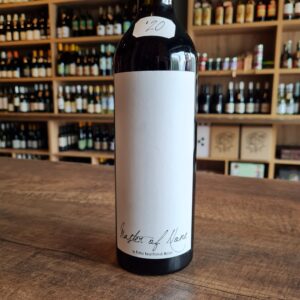 Master of none - Playing with words referring to themselves not being an expert in any one varietal or wine style hence the saying: “Jack of all trades, master of none”. Clever and humble, nonetheless, their wines are at the forefront not only of South Africa but in the world with the amazing wines they are producing. If you enjoy reds on the lighter end of the spectrum such as Pinot Noir or Gamay then Pieter's 'Master of None' will definitely be up your street! It comprises a blend of 5 different grape varieties from tiny vineyard plots across 6 distinct regions; 40% Grenache from Wellington, 30% Cinsault from sites in Darling and Stellenbosch, 8% Pinot Noir from Elgin and a further 8% Syrah from Swartland. Unusually, Pieter then tops up the blend with Voor Paardeberg Chenin Blanc, adding aromatic freshness to the finished wine. It drinks like a top-class Beaujolais – super bright and juicy, bursting with wild strawberry, cherry and with an earthy, smoky undercurrent. Enjoy at room temperature or slightly chilled – perfect for summer drinking! “In 2004, a lady came to my house to buy wine. She asked for anything but Shiraz. “I don’t drink Shiraz”, were her exact words. I poured her a glass of wine. She loved it and bought 3 cases. It was a straight Shiraz. It’s a fact – we do judge the book by its cover.”
Master of none - Playing with words referring to themselves not being an expert in any one varietal or wine style hence the saying: “Jack of all trades, master of none”. Clever and humble, nonetheless, their wines are at the forefront not only of South Africa but in the world with the amazing wines they are producing. If you enjoy reds on the lighter end of the spectrum such as Pinot Noir or Gamay then Pieter's 'Master of None' will definitely be up your street! It comprises a blend of 5 different grape varieties from tiny vineyard plots across 6 distinct regions; 40% Grenache from Wellington, 30% Cinsault from sites in Darling and Stellenbosch, 8% Pinot Noir from Elgin and a further 8% Syrah from Swartland. Unusually, Pieter then tops up the blend with Voor Paardeberg Chenin Blanc, adding aromatic freshness to the finished wine. It drinks like a top-class Beaujolais – super bright and juicy, bursting with wild strawberry, cherry and with an earthy, smoky undercurrent. Enjoy at room temperature or slightly chilled – perfect for summer drinking! “In 2004, a lady came to my house to buy wine. She asked for anything but Shiraz. “I don’t drink Shiraz”, were her exact words. I poured her a glass of wine. She loved it and bought 3 cases. It was a straight Shiraz. It’s a fact – we do judge the book by its cover.”


